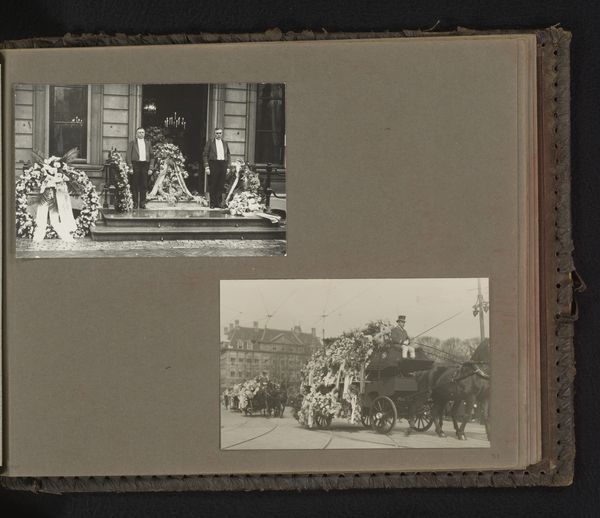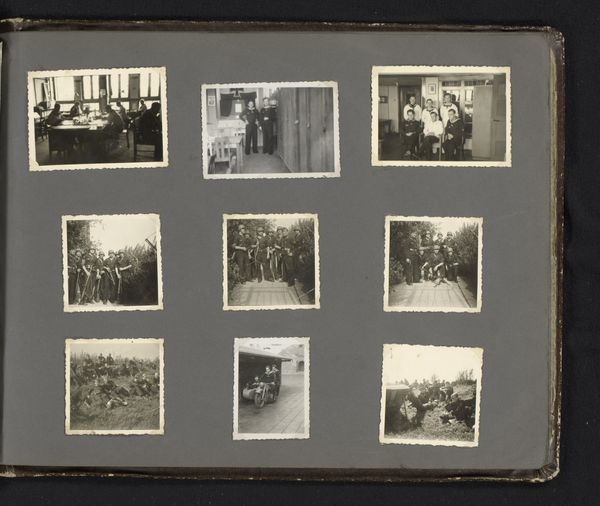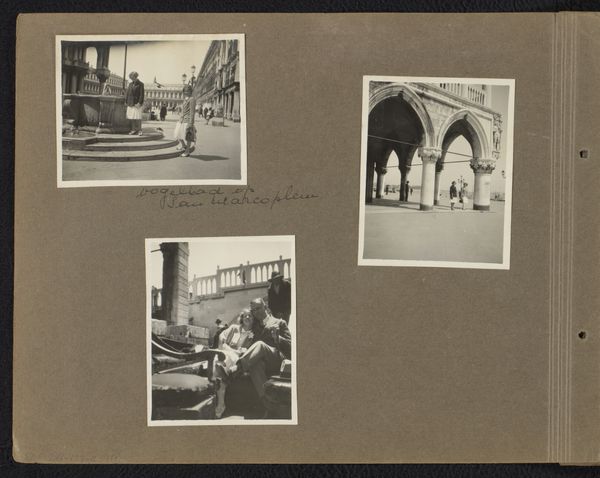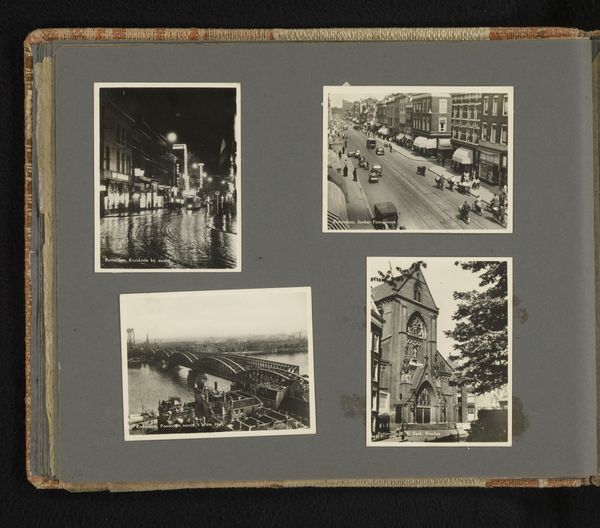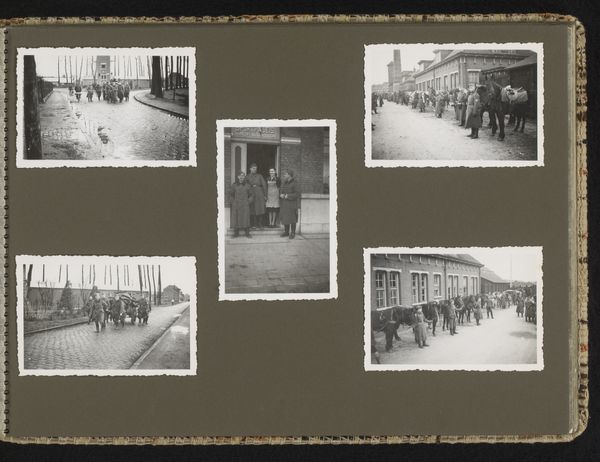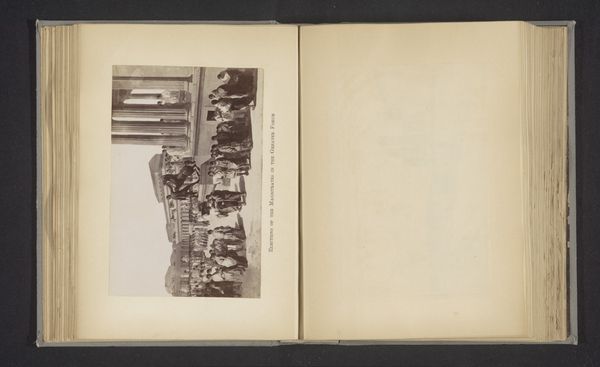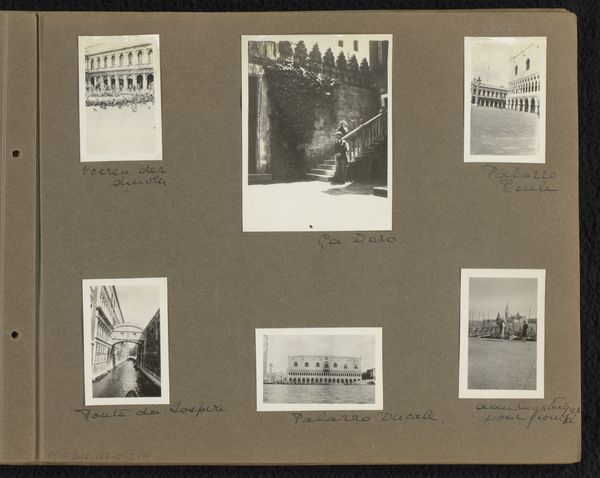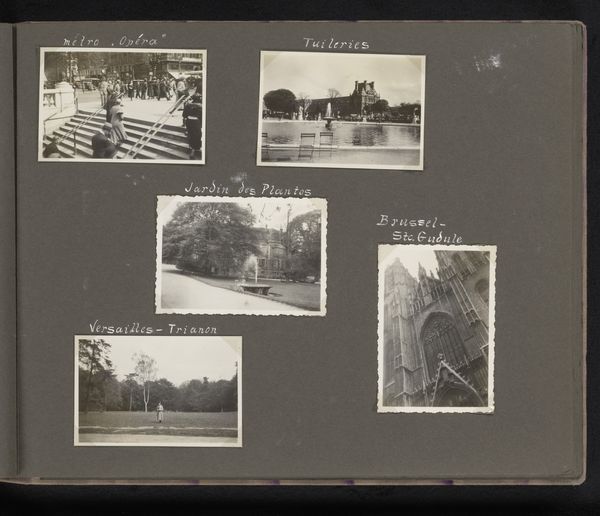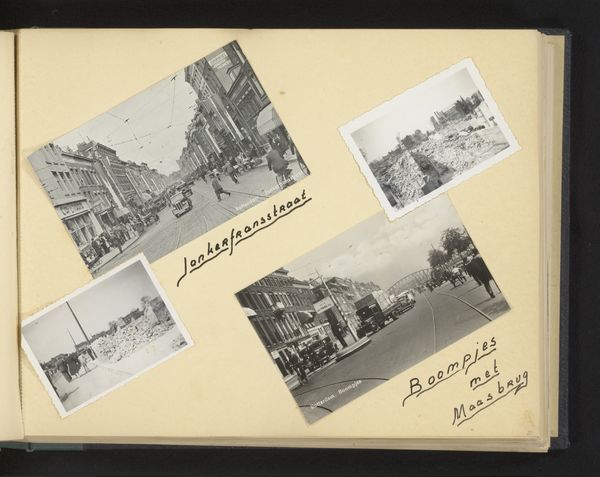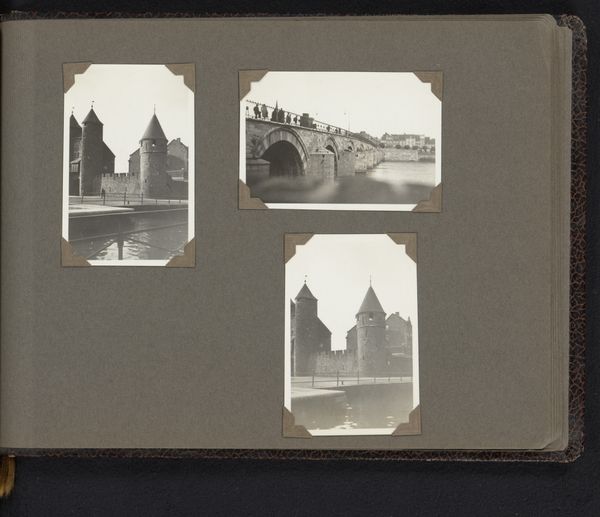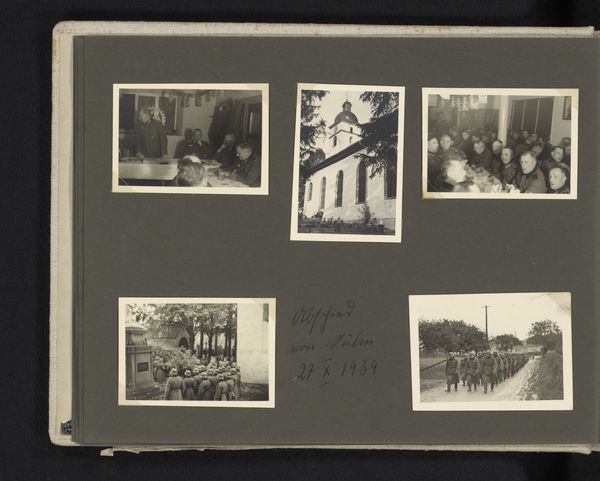
Begrafenisstoet van prins Hendrik in Den Haag en het graf van Willem van Oranje in de Nieuwe Kerk te Delft 1934
0:00
0:00
anonymous
Rijksmuseum
photography, gelatin-silver-print
#
landscape
#
photography
#
photojournalism
#
gelatin-silver-print
#
cityscape
#
modernism
Dimensions: height 220 mm, width 262 mm
Copyright: Rijks Museum: Open Domain
Curator: What we have here is an interesting gelatin-silver print dating to 1934. It is entitled "Begrafenisstoet van prins Hendrik in Den Haag en het graf van Willem van Oranje in de Nieuwe Kerk te Delft," which translates to "Funeral Procession of Prince Henry in The Hague and the tomb of William of Orange in the New Church in Delft." It is currently housed at the Rijksmuseum. Editor: The contrast of these combined images speaks volumes. On one side, an impressive funerary march along the street seems endless. And on the other, this grandiose structure stands like a silent temple in all its architectural glory. The solemnity of both is palpable, isn't it? Curator: Indeed. It uses a visual binary typical of early photojournalism. Note the strong horizontal lines in the procession scene versus the soaring verticality within the church. These contrasting formal choices emphasize both collective mourning and individual legacy. Editor: I wonder about the political climate in 1934. A carefully curated image of royal continuity—both of a recent and historical figure—would reinforce ideas about the established state and nationhood, which in that era meant also responding to fears of the rise of totalitarianism. The use of modernist photographic style gives it also a propagandistic quality. Curator: A keen point. One might further explore how the photographer employs light and shadow to create a sense of depth, lending each scene a certain gravitas. Note the distribution of light on the various elements within the tomb architecture to produce that effect. Editor: It prompts one to consider whose narrative is being prioritized. Are we witnessing genuine mourning, or is it a staged performance of power? Whose voices were deliberately left out of these images, and why? And if we don't reflect upon those deliberate omissions, aren't we only supporting old social hierarchies? Curator: A good point about our role in perpetuating these views. Nonetheless, returning to the photographic qualities themselves, one might consider this work to demonstrate a sophisticated understanding of photographic tone. Editor: Seeing it from a social perspective gives an image that was produced ninety years ago an unusual amount of cultural relevance, right? Thank you. Curator: My pleasure.
Comments
No comments
Be the first to comment and join the conversation on the ultimate creative platform.
